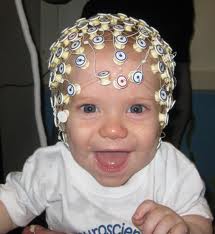 The scientific study of dreams has fallen on hard times. In an era dominated by cognitive-behavioral therapy, psychoactive drugs, and computer models of the mind, dreaming seems less relevant to psychology today than at any time since Sigmund Freud published The Interpretation of Dreams in 1900.
The scientific study of dreams has fallen on hard times. In an era dominated by cognitive-behavioral therapy, psychoactive drugs, and computer models of the mind, dreaming seems less relevant to psychology today than at any time since Sigmund Freud published The Interpretation of Dreams in 1900.
The problem, ironically, is not a lack of empirical evidence about the nature and function of dreams. Rather, the problem is too much evidence that does not seem to add up to a coherent theory or a useful guide for therapeutic practice.
Psychoanalysts from Freud onwards have used clinical case studies to argue that dreams, despite their cryptic symbolism, are meaningful and can be tremendously helpful in therapy. In the 1950’s, however, neuroscientists discovered that dreaming correlates with automatic processes in the brain during sleep, suggesting that dreams are in fact nothing but neural nonsense. At about the same time, quantitative researchers began using statistical methods to analyze tens of thousands of dream reports. Instead of bizarre symbols or random nonsense, these researchers found a large number of clear, straightforward continuities between dream content and people’s emotional concerns in waking life.
The results from each of these areas of research appear to contradict the other two, making the quest for common ground all the more difficult.
New developments in cognitive science offer a better way forward, by illuminating the evolutionary features of the human mind as they relate to the survival needs and adaptive challenges facing our species. When we look at dreaming in this broader context, a simple yet powerful thesis emerges: dreaming is a kind of play, the play of the imagination in sleep.
Zoologists have found evidence of play behaviors in all mammals, especially among the youngest members of each species. Play occurs within a temporary space of pretense and make-believe where actions are not bound by the same constraints that govern the normal, non-play world. A major function of play, most researchers agree, is to practice responses to survival-related situations in a safe environment, so the young will be better prepared when they become adults to face those situations in waking reality. Creativity, flexibility, and instinctual freedom are the hallmarks of play, in humans as well as other animals.
All of these qualities of play are prominent in dreaming, too. Dreaming occurs within sleep, a state of temporary withdrawal from the waking world in which the imagination is given free reign to wander where it will. Dreaming tends to be more frequent and impactful in childhood; young people experience dreams of chasing, flying, and lucid awareness much more often than do older people. The contents of dreams often have direct references to survival-related themes like sexuality, aggression, personal health, social relations, and the threat of death. Although dreams in general are not as wildly bizarre as often assumed, they do have the qualities of spontaneous creativity and rich variation that stimulate the mind to look beyond what is to imagine what might be.
Thinking about dreaming as a kind of play has many advantages, foremost of which is overcoming the conflicts between the different branches of dream research. Dreaming is indeed rooted in natural cycles of brain activity, as neuroscientists have argued, but it no longer makes sense to treat dreams as meaningless by-products of a sleep-addled mind. If we saw a group of children playing an imaginary game of house, would we be justified in assuming their brains are somehow malfunctioning? Not at all. In the same way, we should recognize the playful qualities of dreaming as integral to healthy cognitive functioning. In the language of computer programming, dreaming should be appreciated as a vital feature of the mind, not a bug to be fixed or eliminated.
A dreaming-is-play perspective has clear benefits for the practice of psychotherapy. Rather than laboring to uncover deep hidden messages, therapists can explore the imaginative dynamics of their clients’ dreams for useful clues to their emotional concerns and waking life challenges (while still pursuing deeper symbolic levels, if so desired).
This can be especially helpful in caring for trauma patients. Research on post-traumatic stress disorder (PTSD) has shown that during successful treatment the patients’ recurrent nightmares gradually become less fixated on the trauma and more open to an increasing variety of dream themes, characters, and scenarios. In other words, the more playful their dreams become, the more progress the patients are making towards psychological health.
I once did a research project with a woman, “Nan,” who was nearly killed in a car accident and spent several days in intensive care with severe spinal injuries. Her dreams following the accident were filled with fear, aggression, and misfortune, exactly what we would expect of someone with acute PTSD. But Nan told me she put her hopes on one unusual dream, which came about four months after she was hurt. In this dream there was a magical paintbrush that allowed her to paint the colors of the rainbow, just like a beloved character she remembered from a childhood story. This was the first time since Nan’s accident that one of her dreams had so many references to colors, positive emotions, and good fortunes. The green shoots of playfulness that emerged in this dream anticipated, and perhaps even stimulated, her eventual recovery of health.
The evolutionary success of our species is largely due to the tremendous flexibility and adaptive creativity of our minds. Current scientific evidence is telling us that dreaming is a powerful, neurologically hard-wired process that strengthens precisely those distinctively human psychological abilities. Our playful reveries during sleep function like mental yoga: stretching our cognitive abilities in new directions, exploring the boundaries and potentials of awareness, and preparing us for whatever the waking world may bring.

